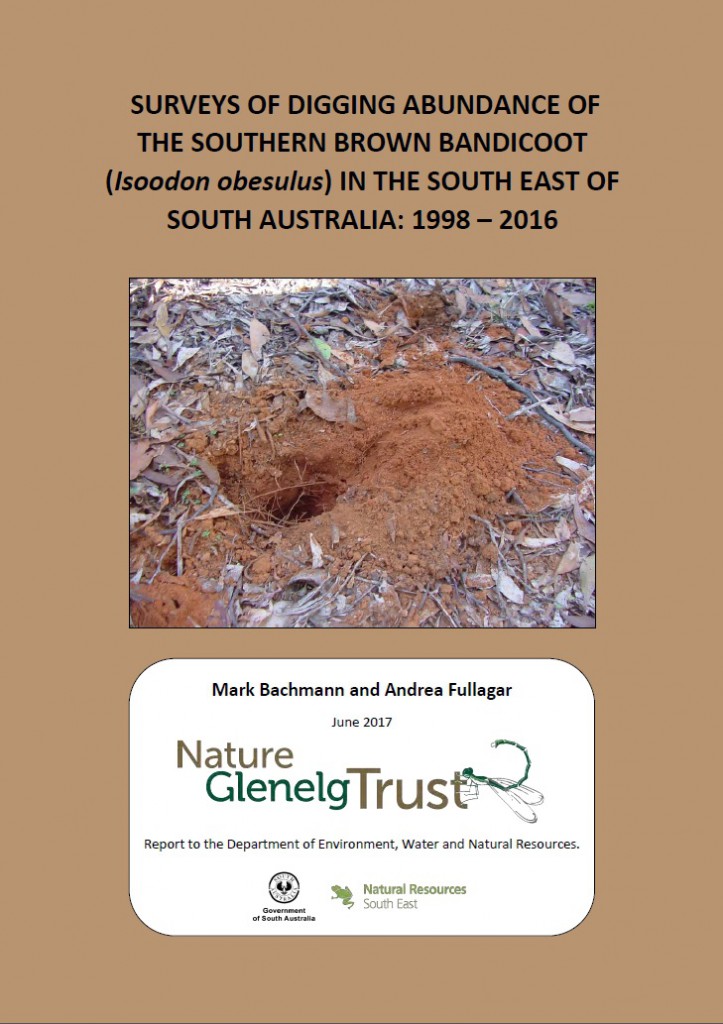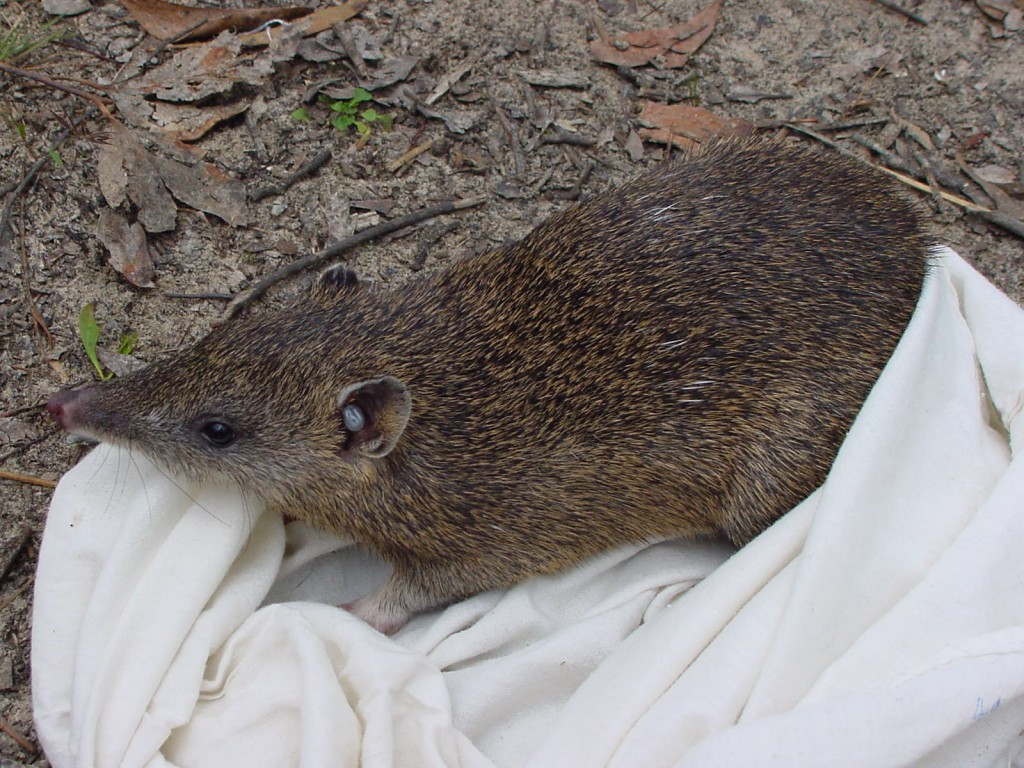Southern Brown Bandicoot digging abundance report now complete and available to download
It’s taken a little while to pull everything together, but the huge job of collecting digging abundance data in the field for the Southern Brown Bandicoot (completed by 2016 NGT graduate intern Andrea Fullagar) – has led to a major review of the species in the South East NRM region.
This project has helped contribute to the creation of a significant long-term biological data-set, by repeating a method first employed (as a rapid assessment technique for the species) by Dr David Paull back in 1998. The survey was repeated by DEWNR and ForestrySA in 2007; meaning the 2016 NGT survey marks the third installment in this long-term monitoring program. A huge thanks to David, DEWNR and ForestrySA for generously making the data from previous surveys available for analysis.
So, if you’d like to learn more about one of the few medium-sized ground-dwelling marsupials that has managed to persist in the region, then feel free to download and read a copy of the report: Bandicoot Digging Abundance Survey in SE SA – FINAL – 2017-07-24.
The report highlights that, despite the species still persisting in parts of the Lower South East, it remains under threat – particularly in smaller, outlying population areas. It also raises important questions in the discussion about fire management, survey techniques, fox control programs, population genetics and the potential for future translocations.
The information from this work is contributing to a review of the Regional Action Plan for the Southern Brown Bandicoot, currently being finalised by NGT’s Bryan Haywood.

Cover of the Southern Brown Bandicoot digging abundance survey report. Please CLICK for the link to the full pdf copy.
This project is supported by Nature Glenelg Trust and Natural Resources South East, through funding from the Australian Government’s National Landcare Programme.

